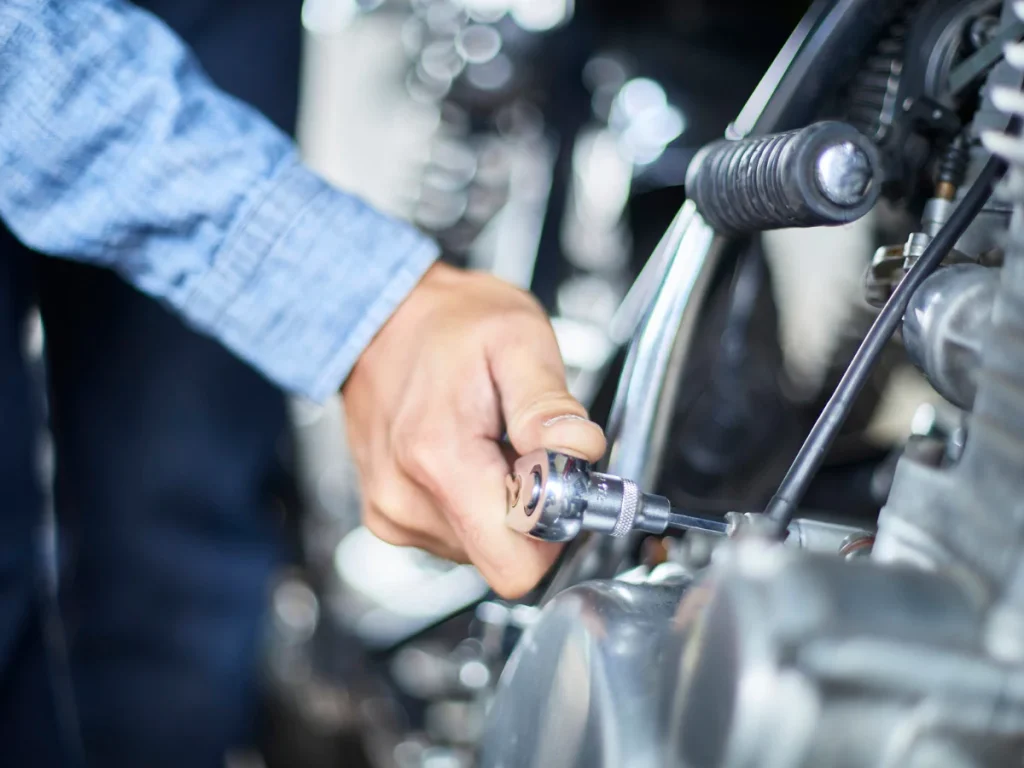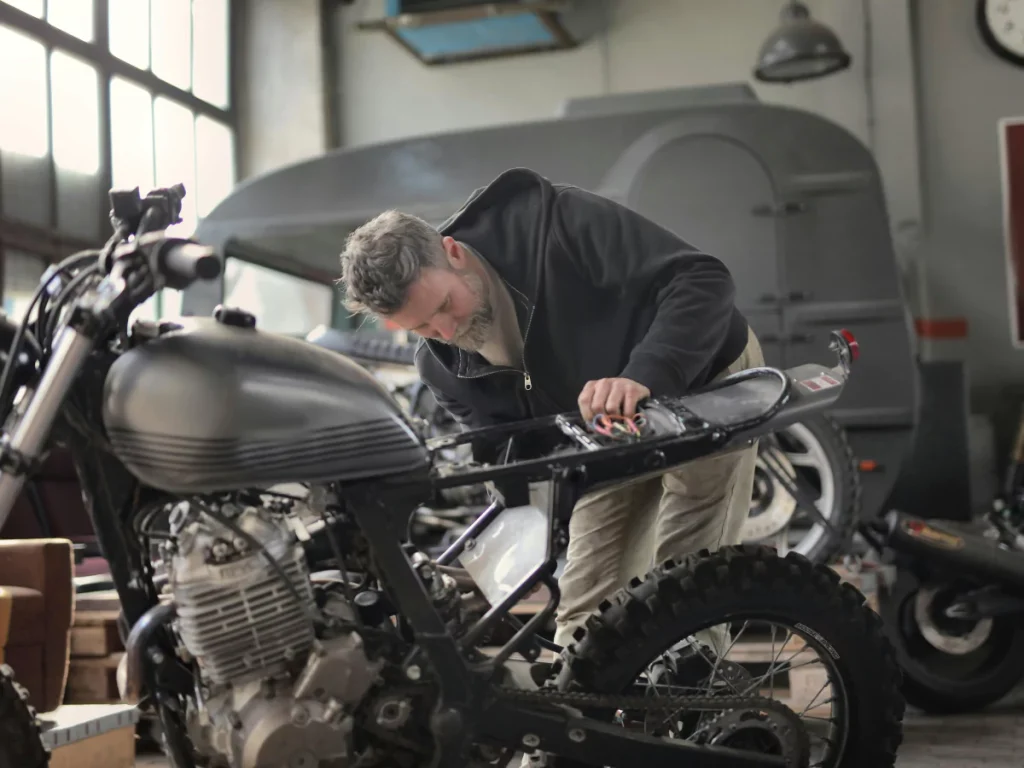Why Inspecting a Used Motorcycle Matters
Buying a used motorcycle can be a smart move — it’s cheaper, there’s often less depreciation, and you can find some pretty sweet deals. But here’s the thing: looks can be deceiving. Just because that bike looks shiny and sounds decent doesn’t mean it’s mechanically sound. A proper inspection can save you from expensive repairs or worse, a dangerous ride.
Think of it like dating — you wouldn’t marry someone after one good selfie, right? The same goes for bikes. Let’s get into how you can confidently inspect a used motorcycle before buying it, especially if you’re near Heron Lakes Estates. And hey, if you want a professional to handle it, Texas First Auto Inspections has your back.
Initial Walk-Around: First Impressions Count
Before you dive into the nitty-gritty, start with a visual check. Stand a few feet away and look at the bike as a whole. Does anything seem off-balance or mismatched? Are there scratches, dents, or rust that weren’t disclosed? If so, they might hint at a rough history — like being dropped, wrecked, or poorly stored.
Check for:
- Matching paint across panels and tank
- Rust on the frame, bolts, or exhaust
- Leaks under the bike
- Any signs of a crash or DIY repairs
This first step helps you decide if it’s even worth continuing.

Check the VIN (Vehicle Identification Number)
This is your bike’s identity. You’ll want to:
- Make sure the VIN on the frame matches the one on the engine and title.
- Verify it hasn’t been tampered with — mismatched or scratched-off numbers are red flags.
- Run the VIN through a vehicle history report or database to check for theft, salvage, or major accidents.
In Heron Lakes Estates, a reputable shop like Texas First Auto Inspections can help confirm everything lines up legally.
Inspect the Frame and Chassis
The frame is like the skeleton of the bike — if it’s compromised, the whole thing’s a bust. Look for:
- Cracks or welds, especially around the headstock, swingarm, and footpegs.
- Bent forks or misaligned wheels.
- Rust, especially in hidden areas like under the seat or behind fairings.
A damaged frame isn’t just costly — it’s unsafe. Don’t ignore it.
Wheels and Tires: More Than Just Rubber
Spin the wheels. Look for dents in the rims or uneven rotation — both could mean alignment issues. Check the tire tread depth and look for cracks or dry rot.
Don’t forget:
- Uneven wear = possible suspension or alignment problems.
- Date codes on tires — if they’re over five years old, plan on replacing them soon.
- Low air pressure could hint the seller doesn’t maintain the bike well.
Brake System Check: Safety First
Brakes save lives, so don’t skimp on this one. You’ll want to:
- Inspect the brake pads for thickness — they should have at least 2mm remaining.
- Check rotors for grooves, warping, or discoloration (blue tint = overheating).
- Squeeze the brake levers and check the firmness — mushy brakes could mean air in the lines or fluid issues.
- Look at the brake fluid reservoir. The fluid should be clean and not dark or cloudy.
If anything feels off here, walk away or negotiate for replacements.
Suspension: The Ride Quality Test
Push down on the front forks and rear suspension. It should bounce back smoothly — not creak, sag, or feel sticky.
Things to look for:
- Leaky fork seals (check for oil residue on the fork tubes).
- Rear shock preload settings — overly soft or stiff could indicate wear.
- Worn bushings or bearings that allow excessive movement.
The suspension tells you a lot about how the bike’s been ridden and cared for.
Chain and Sprockets: Drive System Health
This one’s simple but important. A neglected chain can ruin your ride — or worse, snap and cause an accident.
Check for:
- Rust or stiff links on the chain.
- Sharp or hooked teeth on the sprockets.
- Proper tension and lubrication — too tight or too loose is a red flag.
Chains aren’t super expensive to replace, but worn sprockets can also mean more hidden issues.
Inspect the Engine: The Heart of the Beast
Now we’re getting serious. Start the engine cold — a bike that’s already warm may be hiding startup issues.
Listen and look for:
- Strange noises: knocks, rattles, ticking.
- Excessive smoke from the exhaust (blue = oil burning, white = coolant, black = too rich).
- Smooth idling and throttle response.
Let it warm up for a few minutes and check for:
- Leaks around gaskets, hoses, and seals.
- Overheating or coolant leaks.
- Warning lights on the dash.
If you’re unsure, get a second opinion from Texas First Auto Inspections before committing.
Electrical System: Don’t Ignore the Sparks
Modern bikes rely heavily on their electrical systems, so make sure:
- Headlights, brake lights, turn signals, and the horn all work.
- The battery isn’t swollen, leaking, or dated (more than 3 years old? Consider replacing).
- The starter motor sounds strong and consistent.
Also check the kill switch and any aftermarket add-ons — poor wiring is a nightmare.
Check the Clutch and Transmission
Shift through all the gears. It should feel firm, not crunchy or overly soft. Roll the bike forward and back while shifting — everything should engage smoothly.
Signs of trouble:
- Slipping clutch.
- Clunky downshifts.
- False neutrals (where it feels like it shifted but didn’t).
Clutch repair isn’t cheap, so make sure it’s solid.

Test Ride (If Allowed)
If the seller allows a test ride, take it. You’ll feel:
- Engine response under real throttle.
- How well the brakes and suspension handle.
- Any vibrations, unusual noises, or alignment issues.
If something feels “off,” trust your gut — better to walk away than regret the purchase.
Check the Paperwork
Ask to see:
- The title — make sure it’s clear and in the seller’s name.
- Service records — these can give you an idea of how well the bike was maintained.
- Any receipts for parts or upgrades.
Be wary of sellers with no paperwork — it could be stolen or salvaged.
Common Signs the Bike Has Been Dropped
Dropped bikes are common — but not always well-repaired. Look for:
- Scratches on bar ends, footpegs, levers, or mirrors.
- Bent handlebars.
- Mismatched parts or fresh paint over damage.
One drop isn’t always a deal-breaker, but repeated drops are a red flag.
Trust Texas First Auto Inspections in Heron Lakes Estates
If you’re not confident doing the inspection yourself, let Texas First Auto Inspections handle it. Based near Heron Lakes Estates, they specialize in motorcycle inspections and know exactly what to look for. They offer:
- Frame integrity checks
- Engine diagnostics
- Brake and suspension analysis
- Full electrical system testing
With their trained eyes, you’ll know exactly what you’re getting — and what to avoid.
Texas First Auto Inspections Serving the Heron Lakes Estates Community and Beyond in Houston
Texas First Auto Inspections is dedicated to serving the diverse needs of the local community of Houston, including individuals residing in neighborhoods like Heron Lakes Estates. With its convenient location near landmarks such as the Victory Christian Center and major intersections like Heron Lakes Dr. & N Gessner Rd. (coordinates: 29.93893168487868,-95.54157020048254), we offer motorcycle inspection Houston services.
Get Motorcycle Inspection at Heron Lakes Estates Now
Navigate from Heron Lakes Estates to Texas First Auto Inspections Now
Before You Buy
Inspecting a used motorcycle might feel intimidating, but it’s 100% worth it. A few hours of checking can save you thousands down the road. And if you’re ever unsure, call in the pros. At the end of the day, you want a bike that’s safe, reliable, and a joy to ride — not one that gives you headaches right out of the gate. Do it right, and your next used motorcycle could be your best ride yet.
FAQs
1. Can I inspect a used motorcycle without mechanical experience?
Yes, you can spot many basic issues with just a checklist and a careful eye. However, for more technical problems, it’s best to consult a pro like Texas First Auto Inspections.
2. How long does a motorcycle inspection take?
If you’re doing it yourself, plan on spending at least 30–60 minutes. A professional inspection can take a few hours depending on the depth.
3. What’s the most expensive issue to look out for?
Engine or frame damage can be extremely costly to fix. If you suspect either, avoid the purchase or negotiate a steep discount.
4. Is it okay if the seller won’t let me test ride the bike?
Some sellers may refuse for insurance reasons. That’s not a deal-breaker, but make sure they at least start the engine cold and let you hear and see it run.
5. How do I know if the odometer has been tampered with?
Check for wear on the grips, pegs, and seat, if they look overly worn but mileage is low, something may be off.







